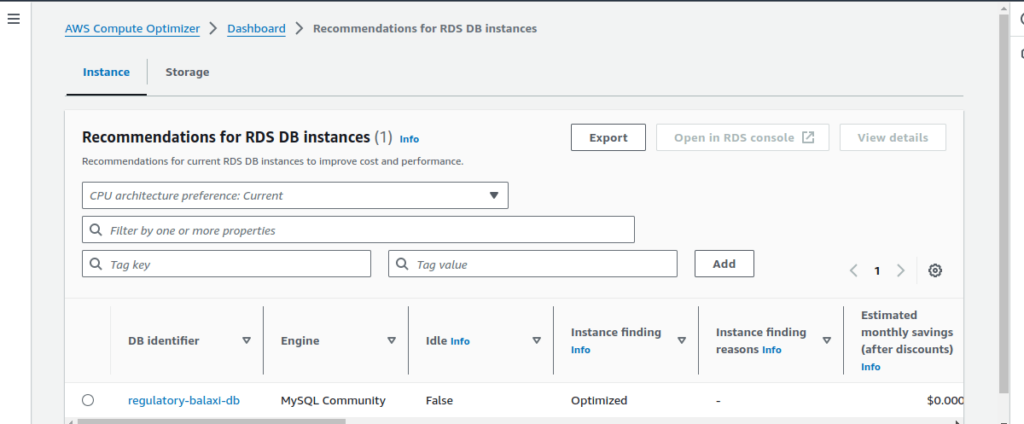© 2025. All rights reserved by Groots Software.
AWS Compute Optimizer now provides recommendations for Amazon RDS MySQL and RDS PostgreSQL DB instances and storage. These recommendations help you identify idle databases and choose the optimal DB instance class and provisioned IOPS settings, so you can reduce costs for over-provisioned workloads and increase the performance of under-provisioned workload.

AWS Compute Optimizer automatically discovers your Amazon RDS MySQL and RDS PostgreSQL DB instances and analyzes Amazon CloudWatch metrics such as CPU utilization, read and write IOPS, and database connections to generate recommendations. If you enable Amazon RDS Performance Insights on your DB instances, Compute Optimizer will analyze additional metrics such as DBLoad to give you more insights to choose the optimal DB instance configurations. With these metrics, Compute Optimizer delivers idle and rightsizing recommendations to help you optimize your RDS DB instances.
Introducing Rightsizing Recommendations for Amazon RDS
A recommendation for Amazon RDS MySQL and RDS PostgreSQL databases includes two parts. First, you will see a recommendation for the
Recommendation for DB Instance:
The DB instance part of the recommendation tells you whether Compute Optimizer thinks the database might be idle. Then it gives you up to two instance recommendation options (one x86 and one Graviton) based on whether Compute Optimizer finds the database to be
1. optimized
2. under-provisioned
3. over-provisioned
You can then compare options with the current DB instance to understand the cost and specification differences.
Recommendation for DB Instance Storage:
In the storage tab, you will find a recommendation for the storage type (such as upgrades to gp3 from gp2) and provisioned IOPS for io1 storage volumes.

With these new recommendations in Compute Optimizer, you can quickly detect idle RDS resources and identify opportunities to optimize your RDS DB instance and storage usage, so you can balance the costs and performance for each of your workloads.
© 2025. All rights reserved by Groots Software.

